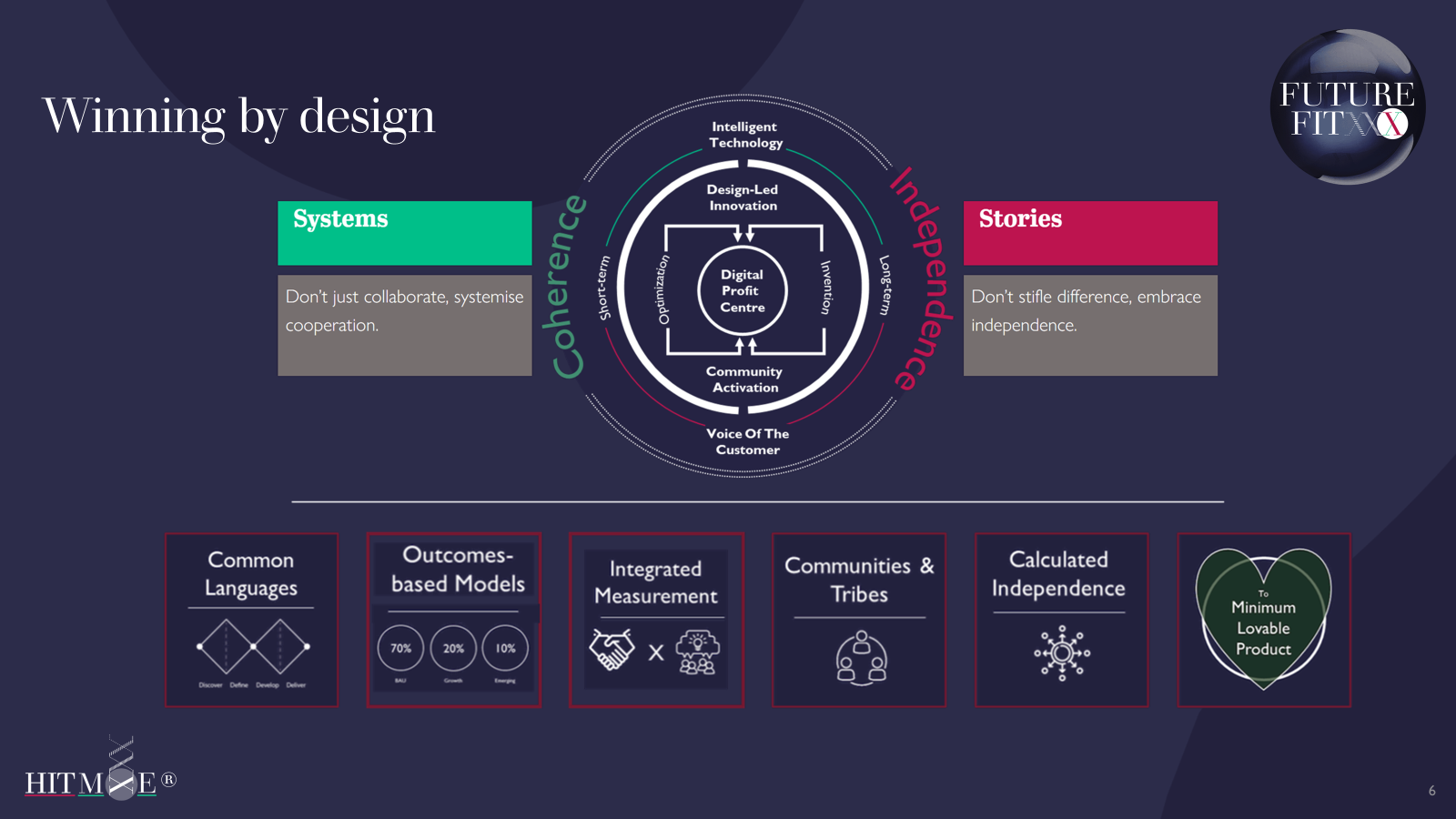🧠 SYSTEMS THINKING
Collaborative design is the future
Building technology around outcomes, not just functions
🔍 Why it matters
CMOs are finding that cross-functional collaboration and centralization often yields worse revenue outcomes. Businesses need a new consensus between collaboration and independence; a playbook to create change from within.
Collaboration is often treated as a soft skill or a process layer. At HITMXE, we treat it as a design principle. A way to build systems and stories that are resilient, inclusive, and future-fit.
Drawing from our concept of cultures of enthusiasm, we help organizations move beyond siloed execution toward shared meaning and mutual reinforcement.
“Don’t re-org. Don’t lay-off. Re-design.”
👥 Who is this for?
1️⃣ CMOs & CXOs seeking better revenue outcomes through cross-functional alignment
2️⃣ Innovation Leads designing internal change with emotional resonance
3️⃣ HR & Culture Architects building inclusive, high-performance teams
4️⃣ Systems Designers rethinking contribution and autonomy.
🔮 What we explore
1. The six components of cultures of enthusiasm
Common Languages: Don’t reject, adopt and experiment with proven systems in areas like human-centred design, open-source and innovation. These help to bring together specialists and breakdown business language barriers.
Integrated Measurement: Don’t measure impact in isolation, recognize intangible and personal impacts. Systemise self-interest with group-interest to realise the benefits of cooperation and collaboration.
Outcomes-based models: Don’t burden BAU processes. Don’t merge processes into monolithic ones. Identify shared outcomes between teams first and then identify inflection points in their respective processes, that will improve those outcomes.
Calculated Independence: Don’t re-org, re-design to reflect a more nuanced view of contribution. Orient staff autonomy toward whether they are part of more centralised business coherency or more decentralised business divergence.
Communities & Tribes: Can be great for bridging siloes. Done wrong they create another silo. Bring together different but related experts and invest effort in getting them to work on real cross-functional initiatives, ensure what they produce makes it out into the wider organisation.
Minimum Lovable Products: Don’t level everything down for viability’s sake, sacrificing feature-richness and diversity. The goal in design and product design is to add value to the person’s experience in the best way possible.
2. Designing for mutual reinforcement
The false economy of quick wins and efficiencies-first
Cooperation and collaboration as co-equal forces
Avoiding monolithic processes and re-org fatigue
Identifying inflection points across teams
3. From systems to stories
Harmonizing sameness and difference
Building shared cultural architecture
Designing rituals that reinforce belonging
🛠️
Engagement format examples
-
“Collaboration Without Compromise”
Build systems that support both autonomy and alignment
-
“Cultures of Enthusiasm Studio”
A multi-session journey through the six components
-
Designing Change From Within”
Why collaboration is a design challenge, not a process fix
💭 Final thought
Collaborative design isn’t just about consensus, it’s about coherence with independence. At Humans In The Machine, we help organizations build cultures that don’t just work together, they think together and flow together - like murmuration in birds. Because in a world obsessed with standing out, perhaps the most radical act is to stand together.

